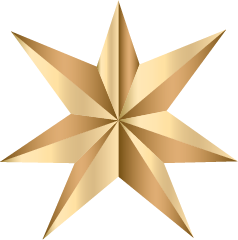selection dosage etc.
Filtration, bottling (tirage), dosage, disgorgement. This is how we designate some of the technical stages on the long and winding road from newly fermentated wine to ready champagne. Below, please find a short description of some years with a few details from the vinification process.
2013:
Spring arrived very late in Champagne in 2013. In April the vineyards were several weeks behind their usual development for the time of the year. In July, the flowering took place in very cold weather. Finally, a change brought summery and even warm temperatures. Eventually, the grapeharvest took place in October, very late and very rare these days.
Bottling: April 2014
Disgorgement: January, October 2024
Dosage: 5,5 g/l, 5,5 g/l
2012:
Spring frost followed by summer hail, cold weather during the flowering and finally attacks of powdery and dawny mildew. In late July, summer finally took over control. In September the grapes were blessed by sunshiny days and double blessed by cooler nights. The result was sugars going up and parnering with a high level of acidity. Perfect if you wish to elaborate wines with a potential to age.
Bottling: April 2013
Disgorgement: January 2024, October 2023, October 2021
Dosage: 5 g/l, 4 g/l, 7 g/l
2011:
The year where the seasons swopped their usual order between them. Thus spring became summer, summer was autumnal and finally the autumn took off the coat and jumped into mild and warm summer clothes. Hardly any rain all year until the grape harvest. The grapes were in a great state when we picked them in the end of August.
Bottling: April 2012
Disgorgement:
Dosage: 5 g/l
2010:
2010 started out with cold weather. Finally, it got warmer, and the first leaves were out in a mild April weather. The growth was fast until colder temperatures in May curbed the development so much that the flowering seemed to never end. A stormy summer continued in August, disease set in. Only in September did the sun make a comeback. It was too late for some grapes, sorting was necessary to leave bad clusters behind. Eventually the yields were not high, but the quality was fine, especially for grapes from specially selected plots like those for Selection.
Bottling: April 2011
Disgorgement: February
Dosage: 5 g/l
2009:
The winter in 2009 was rather cold. Later followed an ideal spring with lots of sun from April. During the flowering in June, cold weather was back as often in Champagne around this crucial moment. The bad weather continued in July. Only in August did summer show its sunny face but this time to keep it so un til grapes of excellent quality could be harvested.
Bottling: April 2010
Disgorgement:
Dosage: 3 g/l
2008:
2008 passed as so many classic years in the Champagne-region with rather cold weather much of the time. During the flowering in mid June as well. The grapes matured from mid August, and put on weight as it rained. Sun in September saw the maturation off in the most exemplary of ways until very mature grapes could be harvest in perfect condition.
Bottling: April 2009
Disgorgement:
Dosage: 6 g/l





